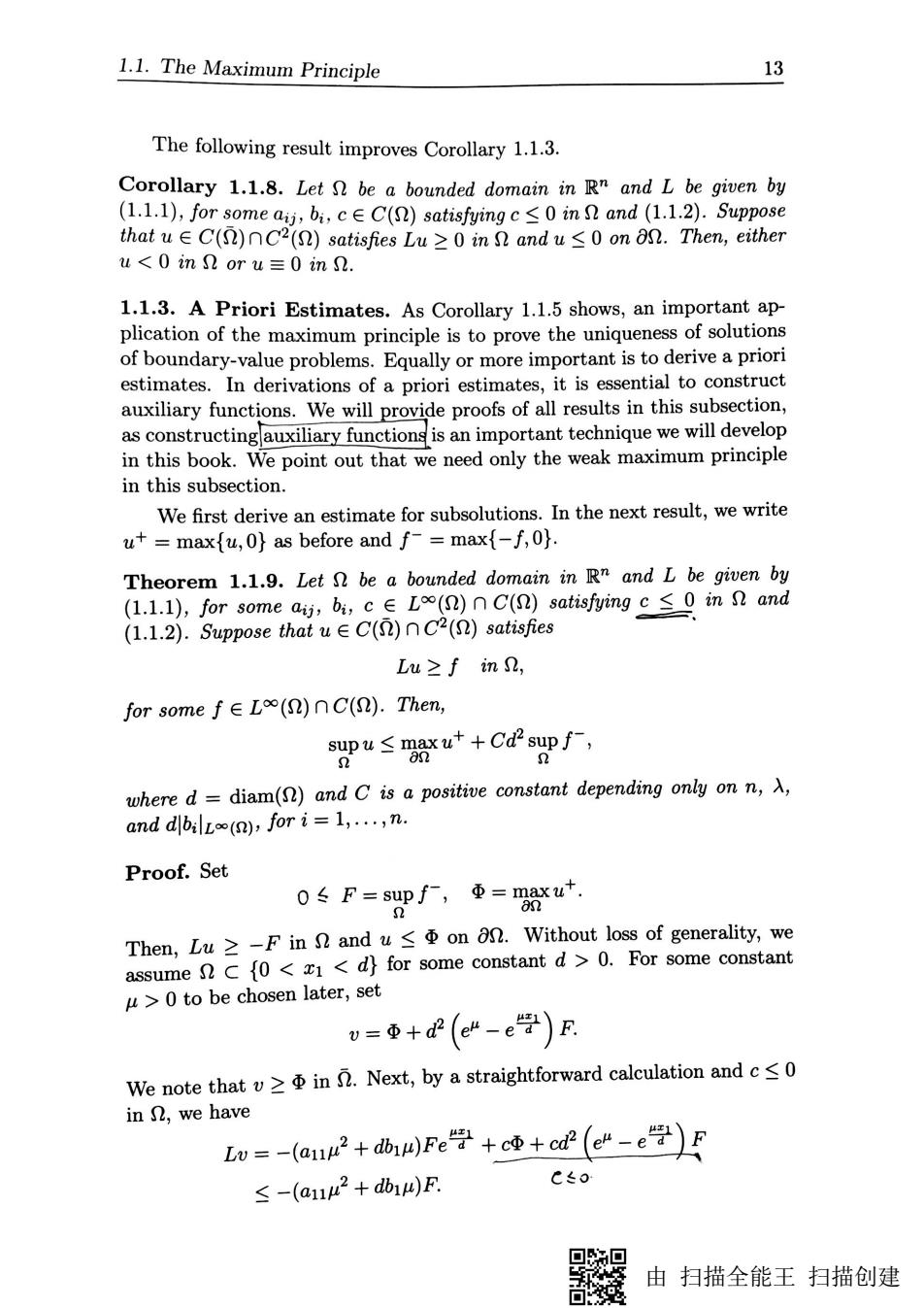正在加载图片...

1.1.The Maximum Principle 13 The following result improves Corollary 1.1.3. Corollary 1.1.8.Let be a bounded domain in R"and L be given by (1.1.1),for some aii,bi.cC(S)satisfuingc<0 in and (1.1.2).Suppose that u∈C()nC2()satisfies Lu≥0 in and u≤0oman.Then,either u<0 in n or u=0 in 1.1.3.A Priori Estimates.As Corollary 1.1.5 shows,an important ap plication of the maximum principle is to prove the uniqueness of solutions of boundary-value problems. estimates.In derivations of a priori estimate ssential to construct auxiliary functions.We will provide proofs of all resultsi this subsection as constructingauxiliary functions is an important technique we will develop in this book.We point out that weneed onlythe weak maximum principle in this subsection. We first derive an estimate for subsolutions.In the next result,we write ut=max{u,0}as before and f-=max{-f,0). Theorem 1.1.9.Let be a bounded domain in R and L be given by (1.1.1),for some aij,bi,c ∈Lo()nC()satisfying c≤0 in n and (1.l.2).Suppose thatu∈C()nC2()satisfies Lu≥finn, for some fL()nC().Then, sDw≤r8xu++Cd supf-, where d=diam(S)and C is a positive constant depending only on n,A, and dlbilL∞(,fori=1,,n. Proof.Set 0←F=swPf,西=8x+ Then,Lu≥-F in and u≤重onan.Without oss of generality,we assume c{<1<d}for some constant d>0.For some constant >0to be chosen later,set u=Φ+d(e-e学)F We note that v≥ΦinD.Next,by a straightforward calculation and c≤0 in we have Lw=-(ar2+db)Fe学+c中+a(e-e学)F ≤-(a1142+db1)F cso g 由扫描全能王扫描创建 ▣ 由 扫描全能王 扫描创建